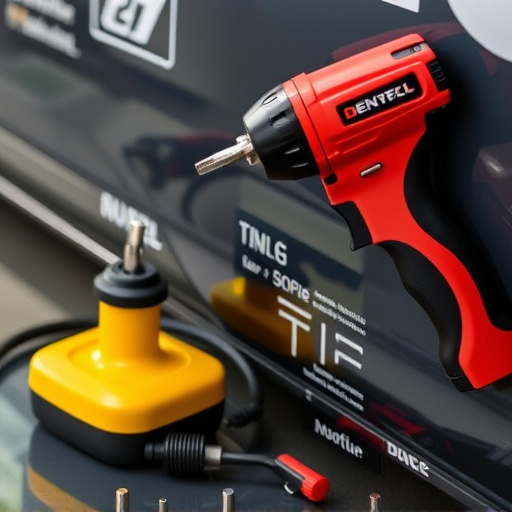Tesla factory paint codes are essential for identifying and categorizing Tesla vehicles by model year and color variations. They offer insights into vehicle history and aesthetic details, enabling enthusiasts and owners to track design changes and maintain consistency across the diverse lineup. These codes also aid auto repair professionals in accurately identifying colors, conditions, and potential repairs over various model years, ensuring top-quality finishes that honor Tesla's original aesthetic vision.
Dive into the fascinating world of Tesla factory paint codes, where every stroke holds a secret. This comprehensive guide unravels the intricate dance between model years, color variations, and unique identification. Understanding these codes isn’t just for enthusiasts; it empowers buyers to make informed decisions. From identifying specific hues to tracking production timelines, mastering Tesla’s paint language reveals hidden gems within their vibrant lineup. Let’s explore how these codes shape the aesthetic journey of each Tesla rolling off the line.
- Understanding Tesla Factory Paint Codes
- Model Year Variations and Their Impact
- Decoding Color Changes Over Time
Understanding Tesla Factory Paint Codes

Tesla factory paint codes are a crucial aspect of understanding and identifying specific models and their variations. Each code corresponds to a unique color or finish, ensuring that every Tesla rolled off the assembly line is accurately specified. These codes are meticulously recorded during production, providing valuable insights into the vehicle’s history. By deciphering these codes, enthusiasts and owners can gain knowledge about not just the paint job but also potential model year changes and even minor design tweaks over time.
The automotive body work involved in creating these painted vehicles is a meticulous process. From the initial mixing of colors to the final application and curing, each step is critical for achieving the desired finish. Even small variations in fender repair or body alignment can impact the overall look, making factory paint codes essential for maintaining consistency across Tesla’s diverse lineup.
Model Year Variations and Their Impact

Tesla’s factory paint codes are a fascinating aspect of their vehicle production process, offering insights into model year variations and aesthetic differences across generations. These codes play a pivotal role in understanding how Tesla has evolved its design and manufacturing techniques over time. Each unique code is like a signature, marking specific attributes such as color, finish, and even minor design elements.
Model year variations significantly impact the overall appearance and value of a Tesla vehicle. While major redesigns are readily apparent, subtle changes in paint codes can go unnoticed by the untrained eye but are crucial for auto repair services and body shop professionals. These variations influence everything from the availability of replacement parts to the expertise required for vehicle body repair, ensuring that owners receive the best care for their cars throughout their ownership journey.
Decoding Color Changes Over Time

Over time, Tesla has introduced new color options for their vehicles, leading to changes in the factory paint codes. Decoding these color shifts involves understanding the specific code assignments for each year and model. For instance, a particular shade might be exclusive to a certain model year or even a limited-edition run, making it a sought-after option for automotive enthusiasts.
Tesla’s paint codes are designed to ensure consistency in vehicle manufacturing. By referencing these codes, not only can you identify the exact color of a Tesla at any given time, but also access information about its exterior condition and potential repairs. This is particularly relevant when considering vehicle paint repair or even automotive restoration for older models. Car paint services professionals often refer to these codes to match colors precisely and provide top-quality finishes.
Tesla’s factory paint codes offer a fascinating glimpse into the brand’s manufacturing process. By understanding these codes, car enthusiasts can decode model year variations and track color changes over time. This knowledge not only enhances appreciation for Tesla vehicles but also facilitates informed purchasing decisions. Whether you’re a collector or a fan, deciphering these codes is a unique way to connect with Tesla’s evolving history.














